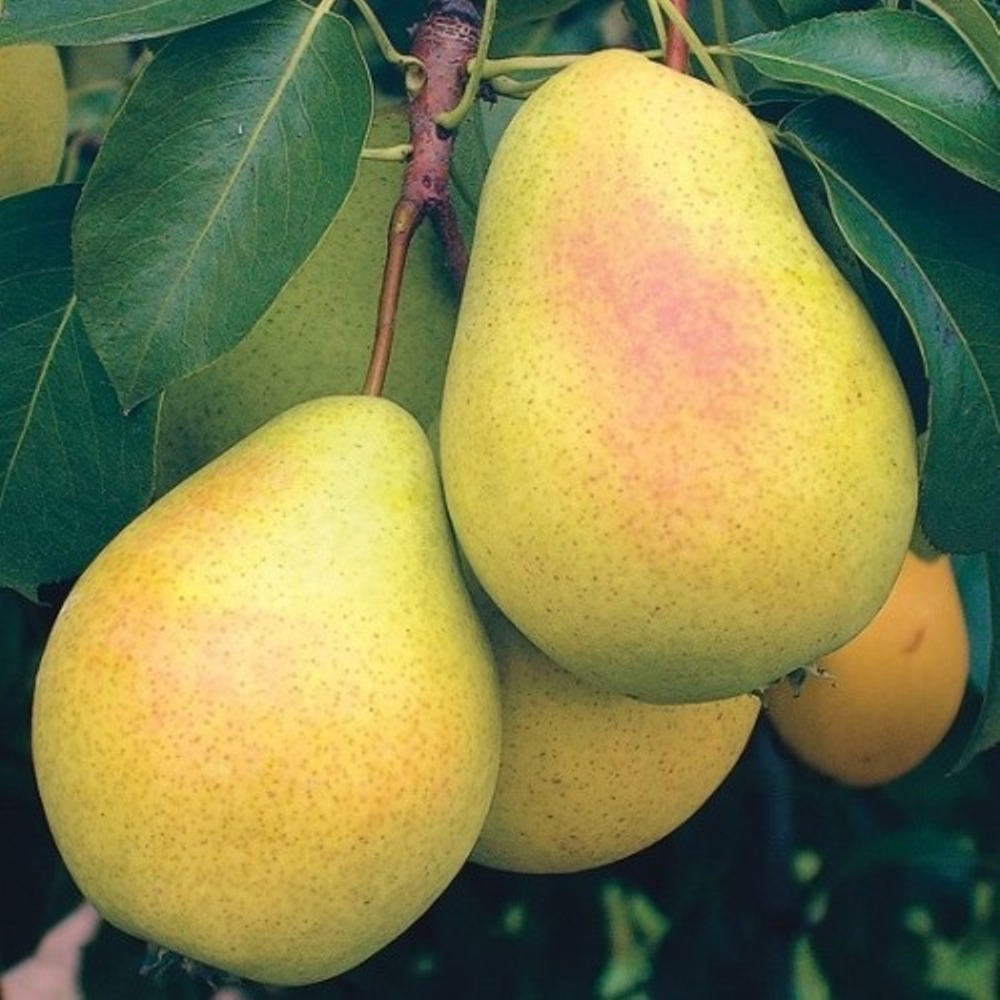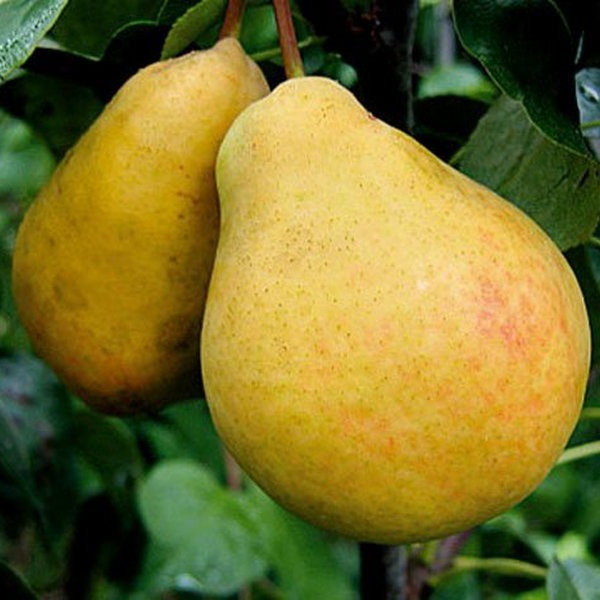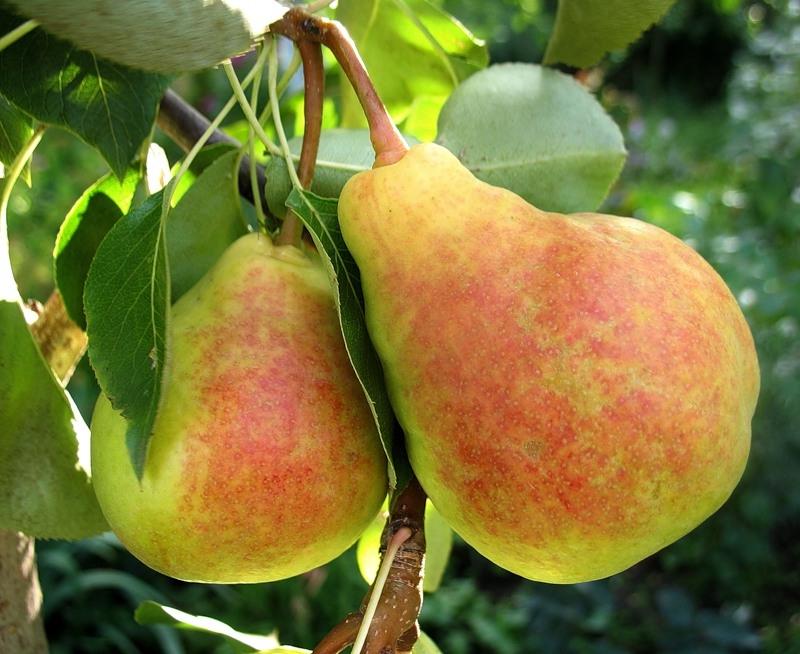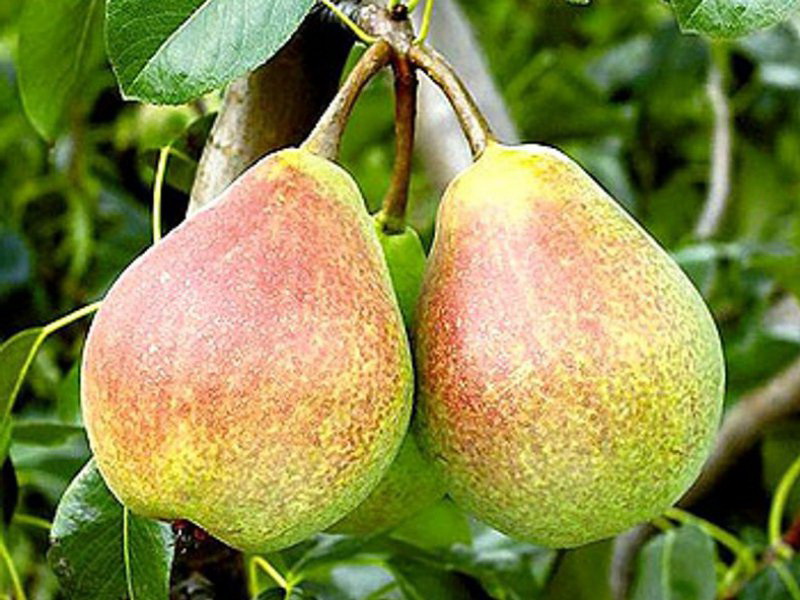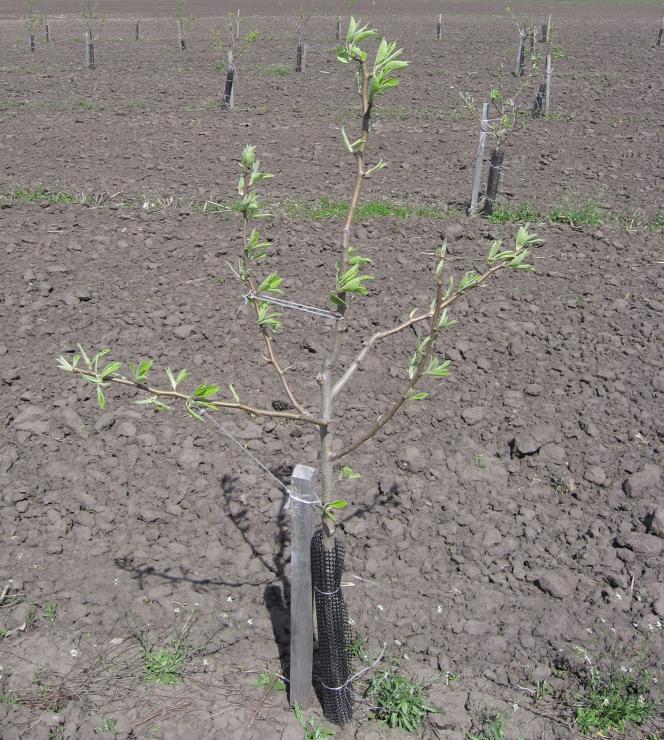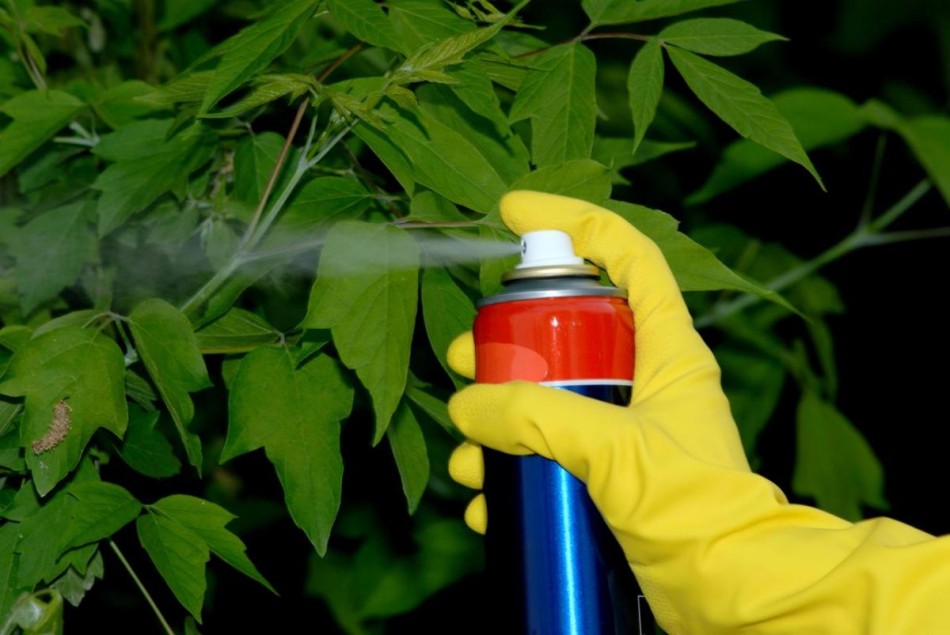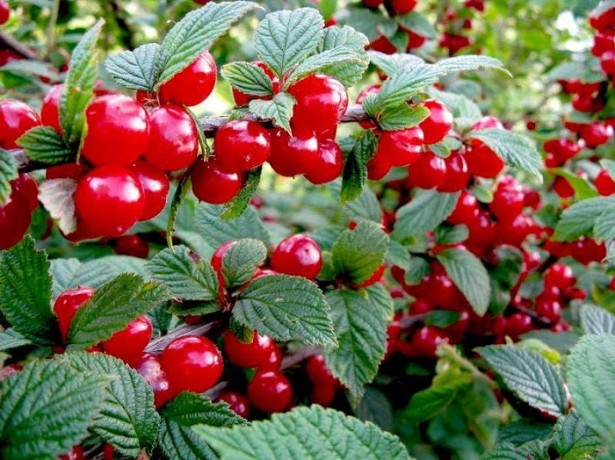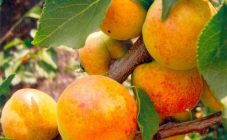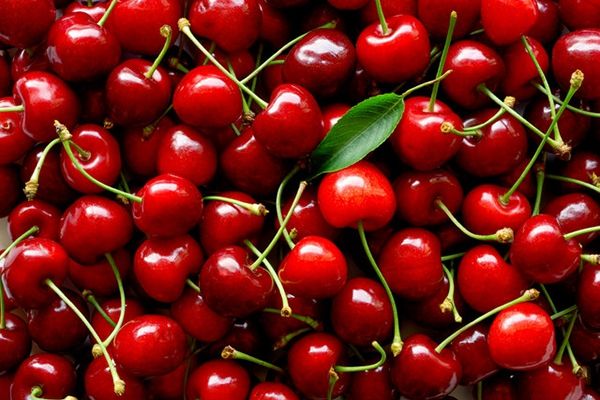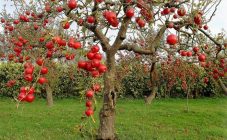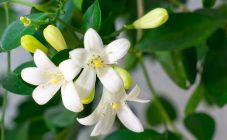Content:
The pear in popularity is second only to the apple tree among pome crops. In this regard, it is not surprising that most gardeners prefer to plant crops on their plots and choose varieties very pickily.
The progenitor of the European garden pear is the wild pear, which has rather small and inconspicuous fruits, which, among other things, differ in a very dubious, bitter-sour taste.
Those pears that we know and love today, tasty, juicy and aromatic, are the result of many years of selection.
For a long time it was believed that growing a pear and getting a good harvest from it was possible only in the southern regions. But in recent decades, varieties have begun to appear that take root well in central Russia, in the Urals and even in Siberia.
The most important thing is to ensure that the pear is properly cared for to meet the needs of the variety planted.
Popular varieties of pear
According to the ripening period, the pear variety can be attributed to three types: early, autumn and winter. When choosing a seedling, you should familiarize yourself with the characteristics of the varieties, since the cultivation of various varieties has its own nuances in terms of care. Let's consider in more detail the popular varieties of culture.
Chizhovskaya
Pear Chizhovskaya is one of the best autumn varieties. The fruits of the culture are large, yellow and pear-shaped. The skin is smooth and thin. The pulp is light yellow, closer to white. Ripening of pears occurs by the time summer ends and autumn begins. Suitable for planting in a garden in different regions, as it is resistant to extreme growing conditions, including sudden temperature changes.
Lada
Lada is considered one of the best summer pear varieties. The fruits are lightweight - no more than 100 g. The color of pears is yellowish with a soft pink blush. The fruit has a fine-grained pulp with a rather delicate aroma. The variety is quite early, it ripens in mid-August. The culture begins to bear fruit from the third year after the planting is carried out. Pear in terms of care and cultivation is very unpretentious.
Summer Duchess
The Duchess summer pear is an old English variety and is considered a reference. It was bred back in the 18th century in Berkshire. The crop is suitable for growing mainly in the southern regions, since the variety does not tolerate low temperatures very well.
The color of the fruit is yellowish with a reddish blush, the flesh is creamy, closer to white. The weight of ripe pears can vary from 170 to 200 g.
Summer duchess is self-fertile, in order to grow it successfully, you will need to plant a pear tree of another variety nearby, which will serve as a pollinator.
Rogneda
Rogneda is a unique variety that can be damaged by a rare pest. Also, this variety has a high immunity to most garden diseases. Since Rogneda is a pear resistant to cold and sudden temperature changes, its cultivation can be carried out in most regions of the country of Russia. The fruits are orange-yellow in color and rounded. The pulp is aromatic and sweet. Among the disadvantages of the variety, one can note the irregularity of fruiting and a high rate of shedding.
Otradnenskaya
Pear Otradnenskaya belongs to autumn varieties with early ripening. She begins to bear fruit from the third year of life. Ripening occurs in mid-September. The main advantage of the variety is stable and high yield. Pear pulp has a sweet and sour taste. The variety is not very susceptible to diseases and has a high index of resistance to cold. Fruit weight can be up to 180 grams. The color is greenish-yellow with a reddish blush.
The conference
Conference pear is one of the most famous varieties. It is she who is widely represented in supermarkets and markets. Ripening of the culture usually occurs in late September-early October. The fruits have a recognizable elongated shape, green color, dense skin and juicy sweet pulp. The variety is highly valued for its high yield.
Bere Moskovskaya
Pear variety Bere Moskovskaya is a young autumn variety with good frost resistance. Even if the winter in the region is cold enough, there is every chance that the plant will survive it safely. The ripening of the crop occurs closer to mid-September. The fruits have an average size - up to 110 g. The skin of this variety of pears is thin, the color is yellowish-pink, and the pulp is very juicy. The variety is moderately resistant to diseases and pests, ripens quickly and does not tolerate heat well. It is appreciated for its taste characteristics and high yield.
Choosing the right variety is not enough to get a decent pear harvest. It is equally important to know how to care for a pear in spring and summer so that there is a good harvest.
Features of pear care
In whatever region the dacha or garden plot is located, it will not be difficult to grow a pear subject to agricultural technology and care rules. The culture is not too capricious, although it has some nuances.
Choosing a landing site
It is recommended to plant the pear in lighted places that are accessible to the winds, but at the same time are well protected from drafts. When planted in lowlands and places with high groundwater levels, trees will develop poorly and may even die. The right choice for a pear garden is a plot located on the south, west or southwest side. Any seasoned gardener knows that a pear, like other crops, feels best on fertile soils, characterized by good moisture and air permeability.
Watering
In the first year of a plant's life, the answer to the question of how to care for a pear is identical to the answer to the question of how to water the pear correctly. No pruning or feeding of the plant is required at the initial stage of growth.
The seedling needs to be watered once a week. A plant usually uses 1 to 2 buckets of water. In subsequent years, the rate of moisture consumption by the plant increases, and the frequency of watering the pear itself decreases.
As a result, the decision on how often to water the pear depends largely on whether it is a dry or rainy summer. On average, one manipulation per month is enough.
When the young pear grows up, two grooves should be laid around the tree, into which water can be poured through a hose. A tree that is already several years old should be watered by sprinkling.
Top dressing
When choosing a fertilizer for any pear variety, it should be remembered that the pear reacts negatively to the increased nitrogen content in the soil. For this reason, nitrogen fertilizers are applied in very limited quantities in the first two years during leaf opening. In the future, nitrogen feeding is carried out only when there is an obvious nitrogen starvation. Its symptoms are growth retardation, an insignificant number of annual increments, too light color of the foliage, underdevelopment of the leaf plate.
On average, the plant should be fed with organic matter no more than once every 3-5 years, depending on the soil fertility indicator. As for the mineral compositions, it is necessary to fertilize pear trees with them annually. They are vital to culture.
Experts recommend not scattering fertilizers over the surface, but putting them into specially dug trenches around the tree. Fertilize the plant in moderation - excess nutrients in the soil can negatively affect the development of the pear.
Disease and pest control
Like any other pome fruit crop, the pear is susceptible to the development of fungal, viral and bacterial diseases. Not only disease, but also harmful insects can harm the culture.
Pest and disease control should begin in early spring with preventive and agrochemical protection measures. These include:
- timely removal of weeds from the site;
- regular feeding;
- competent watering;
- correct pruning of the plant.
In autumn, after leaf fall, it is imperative to remove the foliage from under the trees, and treat the pears themselves with iron or copper sulfate and Bordeaux liquid. A similar treatment should be repeated in the spring.
The following diseases are characteristic of the pear:
- scab;
- black cancer;
- moniliosis;
- rust of leaves;
- powdery mildew;
- white spot;
- rot;
- bacterial burn.
Of the protection measures, biological products (glyocadin, gamair, phytolavin, etc.) are relatively safe for processing crops. Only when they do not cope with the problem is it worth turning to chemical compositions.
As for pests, among them the most dangerous are pear mites, moths, leafworms and green aphids. To combat them, bioinsecticides are effective: actovit, bitoxibacillin and the like.
It is best to start pest and disease control when the first symptom appears. The longer you delay in solving the problem, the more likely it is not to cope with the situation and eventually destroy the plant.
Pruning
Pruning a tree is another of the must-have pear care items. There are three main types of plant pruning:
- formative;
- sanitary;
- anti-aging.
Formative pruning is usually done in the early years of the plant. Its main task is to correctly form the crown. If the crown is irregular, the skeletal branches may break off under the weight of the fruit, and the plant itself will grow one-sided. Plants can be pruned in non-tiered, whorled-tiered or sparse-tiered methods. Each of them has its own nuances, not knowing which the most appropriate solution to the issue would be to invite a specialist.
Sanitary pruning is done every year in early spring, before bud swelling, and in fall, after harvest and leaf fall. Its main purpose is to remove thickening branches, broken, diseased and growing shoots inside the crown. This pruning of the plant also regulates the growth of skeletal branches.
In no case should you postpone the manipulation for the growing season. If the plant is pruned when June comes and the pear has time to bloom, there is a high probability of weakening the crop and not waiting for a decent harvest.
When it comes to rejuvenating pruning of pear trees, it is usually done with the aim of increasing yields. If the tree is very thickened, it is quite logical that the annual growth decreases.
As a result, skeletal and semi-skeletal branches practically do not overgrow with new branches and stand bare.To solve the problem, the crown is usually heavily thinned out, including some of the skeletal branches. The central trunk is also pruned to a side branch. This makes it possible to redirect nutrients to the longline branches.
Effect of grooming on the harvest
Proper care of the crop is almost one hundred percent guarantee of a decent harvest. All manipulations, including watering, pruning, treating plants from diseases and insects, have as their main goal to ensure the normal growth and development of the pear tree and create the most comfortable conditions for it.
Care for any pear variety begins from the moment of planting and continues throughout the entire life period of the plant.
If the culture is started, it will receive an insufficient amount of nutrients. This is quite logical will lead not only to a decrease in yield, but also to a decrease in the size of the fruits themselves, as well as to a deterioration in their taste characteristics.
In general, caring for a pear garden is not particularly difficult. The same manipulations that need to be done with the culture are repeated from year to year. And the plant itself can hardly be called too finicky. Even with minimal care, fruits are likely to ripen.
Thus, even the most experienced gardener can cope with obtaining a good and tasty pear harvest. The most important thing is to take a responsible approach to working with a pear in the garden.
